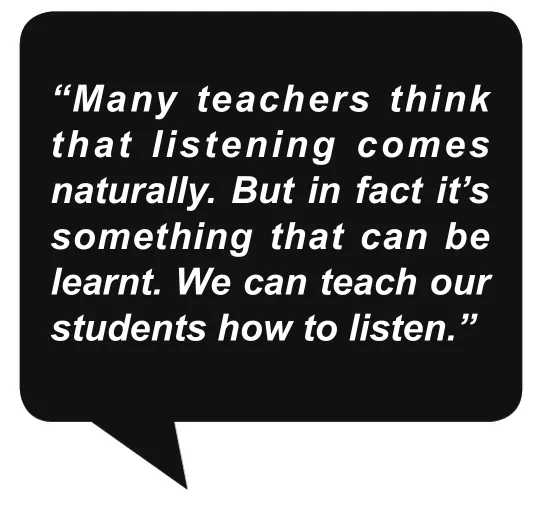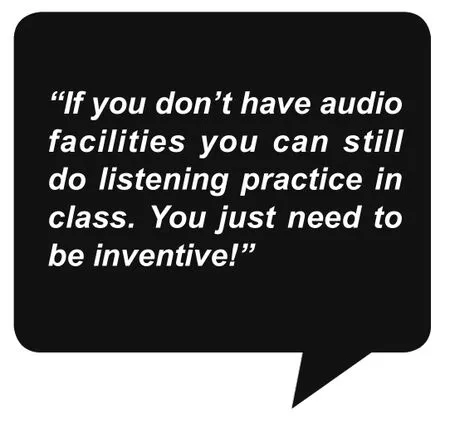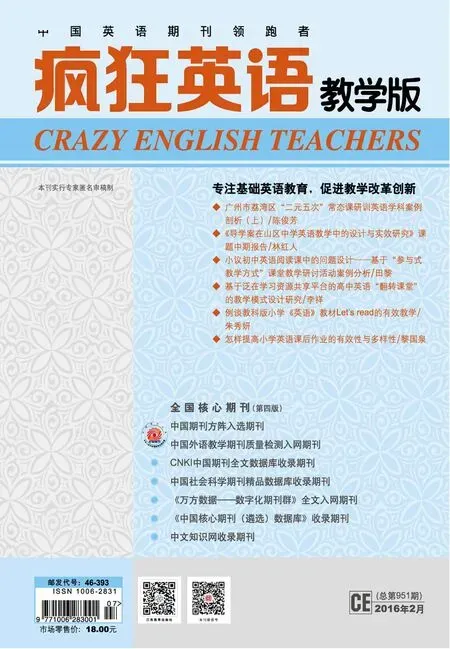Teaching Listening
Teaching Listening
This series of articles from the British Council aims to help you think about your teaching and bring new ideas and activities into your classroom.
The series covers topics including homework,working with large classes and finding resources. Today we look at teaching listening.
How can we teach listening in the English classroom? Read these comments from teachers. Do you agree?

Kazimierz,Malaysia

Zalmina,Afghanistan
We need to find a variety of material for listening and we don’t always need technology. Here are some ideas to help give your students listening practice.
■ If you have a course book but not the CD or CD player,you can bring the audio scripts to life by acting them out.
■ We can adapt course book audio scripts by changing names,places and details to make them more relevant to our students.
■ Students could interview a visitor in English,a different teacher or each other.
■ You should use English in class as much as possible so your students get maximum listening practice.
■ If we have audio facilities in class,we can record native English speakers or good English speakers.
We can play clips from radio and TV programmes as well as simply using course book listening activities. We need to give students a reason to listen.
■ Give activities before,during and after listening so that students are not just listening but doing something with what they hear.
■ Listening skills we can practise include:
• Listening for the main idea: What are the speakers talking about?
• Listening for details: What specific information do you hear?
Authentic listening materials,such as a radio or TV weather report give students experience of hearing “real” English.
■ Authentic material often has quite advanced language. If we use a difficult listening text we can give our students an easier activity to suit their level.
We can find or create different types of listening materials for our students and teach them the skills they need to become good listeners.
What do you think?
Paulo from Brazil writes:
I have a course book but no audio. So I become the CD player! I choose an audio script with two characters. And when I read the text,I stand at the front of the classroom. I write the names of the characters on the board—left and right. So when character A speaks I wave my left hand and when character B speaks I wave my right hand.
I repeat for a second time,and then I repeat it again for the last time. By the end the CD player sometimes gets tired and the voice gets quieter.
As the narrator,you are in complete control of the listening text. You can even change the one in your book to make it more interesting for your students!
A classroom activity—describe and draw
This is a fun listening activity for all ages. The students have a real reason to listen and also to ask questions. In this example the students draw an animal but you can choose any drawing for your students to describe.
■ With students in pairs,one person in each pair draws an animal and then describes it in English to the other.
■ The student who is listening,can ask questions,and tries to draw the same animal without seeing the picture.
■ Set a time limit and then let students compare their animals. The results are usually very amusing—and creative!
Tip: Demonstrate the activity with a student before you put the class into pairs.

Glossary
The audio script is the written words of a course book listening text. Often at the back of the student’s book.
Authentic material is written or spoken English used with learners without changing the level of language. For example,a native speaker’s talking,a newspaper article,a radio programme.
A native English speaker is a person who speaks English as their first language.
Pairs are groups of two students working together in class.
Skills are abilities. We talk about the skills of reading,writing,speaking and listening.
Think about
■ How can you find and create listening materials for your students?
■ Can you add variety by sharing materials with other teachers?
■ What activities can you give your students before,during and after listening? Look at examples in course books or invent your own.
Want to find more teaching tips? Visit www.teachingenglish.org.uk © British Council 2011
• Predicting: What words do you think you will hear?

